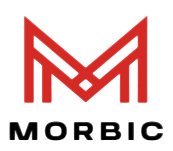
Food photography is an art form that goes beyond simply presenting a meal, aiming to evoke emotions, stimulate taste receptors, and provide the observer with an almost real-time taste sensation. Using color theory is one very effective technique to improve food photography. Understanding how various colors interact with one another will help photographers produce striking, aesthetically appealing photographs that really stand out. For more tips and tools on enhancing your food photography, check out https://alt-command.com/, a great resource to elevate your creative process.
The Psychological Impact of Colors in Food Photography
Food is seen in great part by colors, which can affect our emotions and appetite. Warm colors—reds, oranges, and yellows—are typically connected with hunger stimulation and can make food seem more appealing and active. Cool colors, such as blues and greens, inspire peace and freshness, ideal for presenting light or nutritious meals. Knowing the psychological impacts of colors will enable food photographers to establish a mood that accentuates the meal.
Creating Contrast and Balance with Complementary Colors
Using complementary colors—colors opposite each other on the color wheel—blue and orange, or green and red—is one of the most successful approaches to make your food images stand out. These pairings give the composition visual intrigue and a dynamic contrast that grabs the viewer. Complementary colors placed adjacent to one another help the topic to stand out and provide the image more vitality. For a stunning visual balance, for instance, a vivid crimson sauce can be set against a fresh green garnish, so enhancing the appearance of both ingredients.
Lighting and Color Temperature
Food photography’s lighting choices can significantly impact the color appearance of your images. The color temperatures of various light sources can either warm or chill the hues in your picture. For example, whereas artificial lighting with a greater temperature might accentuate the rich, golden tones in foods like pasta or grilled meat, natural daylight usually gives food a neutral tone. To further enhance your food photography, you can explore tips and tools at https://alt-command.com/ for mastering lighting and composition techniques.
In food photography, applying color theory goes beyond simply enhancing the appearance of a meal to produce an experience the observer will find appealing. Your food shots will look better if you know the psychological impacts of colors, play with contrasts, and try lighting changes. The correct mix of colors will make your meal seem appealing, thereby improving your photographs and inviting visitors to enjoy the occasion.







